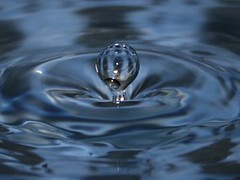Water is essential to the lives of every living thing. That, of course, includes the lives of your orchids. But like all wonderful things, more is not necessarily better. Many orchid plants are killed by their owners because too much “tender loving care” is provided. They suffocate and die. (The orchids, that is, not the owners.) How often should you water? I’m afraid it’s not an easy answer. It will depend on your growing conditions.
“That’s not very helpful,” you say to yourself?
Okay, just to give you some idea, I water my plants about once a week, because I am too lazy to get up earlier in the weekday mornings, and the weekend mornings are pretty much the only time I have. However, I adjust the frequency based on humidity, temperature, light, wind and season. I might do it only once a month in the winter, but twice a week if the humidity is extra low.
Need by Genus
You need to have a basic understanding of your orchid’s need. Knowing the type of orchid you have is a good starting point. If your plant is originally from the cloud forest of Costa Rica, where it receives a rain shower everyday, then you know you should keep your plant constantly moist. Here are some general guidelines:
| Genus | H2O Need |
|---|---|
| Phalaenopsis (Moth orchids) | Evenly moist all year |
| Paphiopedilum (Slipper orchids) | Evenly moist but allow to almost dry before watering again |
| Brassia (Spider orchids) | Moist during spring and summer (active growth); less so while resting |
| Cattleya (Corsage orchids) | Irrigate plenty during active growth, but still let it dry out a bit between waterings. Less when resting |
| Cymbidium (Boat orchids) | Evenly moist; less after growth is complete |
| Dendrobium, Phalaenopsis type | Let dry between waterings |
| Dendrobium, Nobile type | Let dry between waterings; withhold in the winter (2, 3 months or so) |
| Masdevallia | Evenly moist all year |
| Miltoniopsis | Evenly moist all year |
Need by Appearance
The appearance of an orchid can also tell you how much H2O it needs. Orchids that have big pseudobulbs (thick base of stem that stores water and nutrients), such as Cattleyas, usually require drying out and do not like to be moist all the time. On the other hand, orchids with no pseudobulbs, such as Paphiopedilum and Phalaenopsis, require a moist condition. So even if you don’t know which type of orchids you have, you can still make an educated guess.
Water by Feel
You can also water only when the potting material becomes reasonably dry. How can you tell it’s dry? Even when the surface is dry, the inside might not be. Some people put a bamboo stick or a wooden stick in the potting mix to gauge how wet the inside is. Also, some people just lift the pot up to see how heavy it is. Water only if the pot is light. This will require some experience to tell, but after a couple of weeks, you should be able to tell.
Water Quality
Orchids generally do not like water with lots of dissolved minerals, i.e., hard water. But some orchids are more tolerant of dissolved minerals than others. For example, a Phragmipedium has very low tolerance, while a Cattleya does not care as much. Rain water and reverse osmosis water are the purist, while city water and well water can vary quite a bit in the concentration of dissolved minerals. If your shower has white deposits, that means you have pretty hard water.
But keep in mind that, like human beings, orchids also need trace nutrients normally found in regular water. So if you decide to use rain or reverse osmosis water, your fertilizer needs to contain all nutrients needed by the plant. Some people will add a bit of tap water to make sure these trace elements are present. Finally, don’t use water softener in your water, because it usually contains way too much sodium that will ensure your plant’s tragic death. Which is, you know, a total bummer.
Tips About Watering Your Orchids
- When you are not sure whether the plant is dry enough, just wait another day before watering.
- Make sure you pour enough water into the pot that the water comes out in the drainage holes. It encourages your plant to grow deep roots as well as flush out excess fertilizer that could burn the roots. (Yes, that also means your pot needs to have draining hole.)
- Never let your orchid sit directly in water. (There are a few exceptions, but let’s not worry about them now.)
- Orchids such as nobile type Dendrobiums need a dry resting period. But if the pseudobulbs get so dry that they begin to shrivel, just give the plant a little mist with a spray bottle.
- Only water your orchids in the morning. That allows the leaves and crown of the orchid to dry before the night falls. Otherwise your orchid could turn into mushy rot.
- Adjust your potting mix according to the moisture preference of your plant and the desired frequency of your watering. For example, if you know you can’t water every other day, put a little bit of moss or coconut husk fiber to retain moisture. But don’t overdo it! Your plant does not like to be soaked in water all the time. On the other hand, if you live in humid and rainy places, you may consider mounting your orchid instead of potting it.
- Water more often when:
- The plant is actively growing
- There is strong wind/air movement
- The temperature is warmer
- The humidity is lower
- Water less often when:
- The plant is not actively growing
- The temperature is lower
- The humidity is higher
Is everything crystal clear now?
Happy growing!

